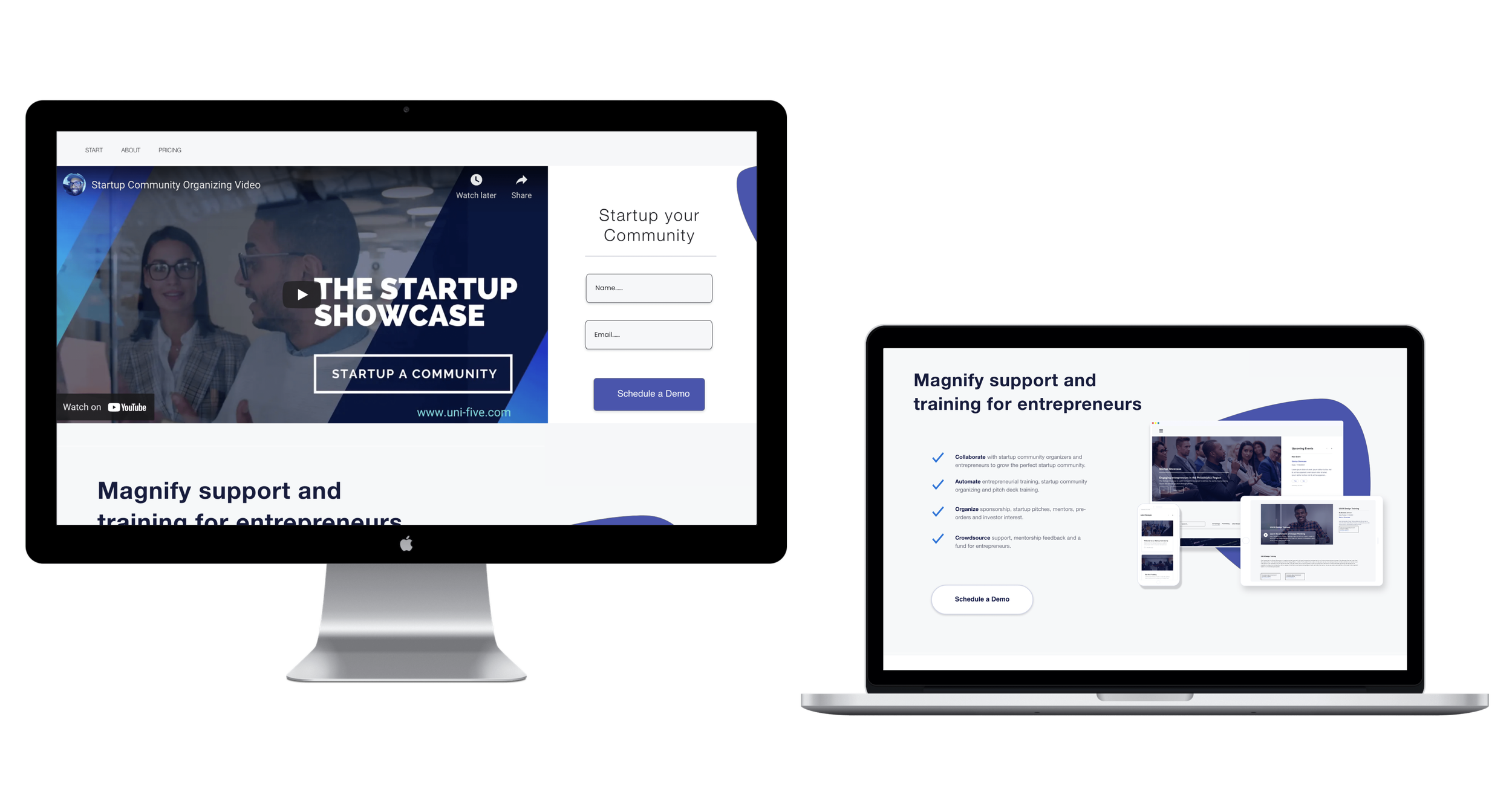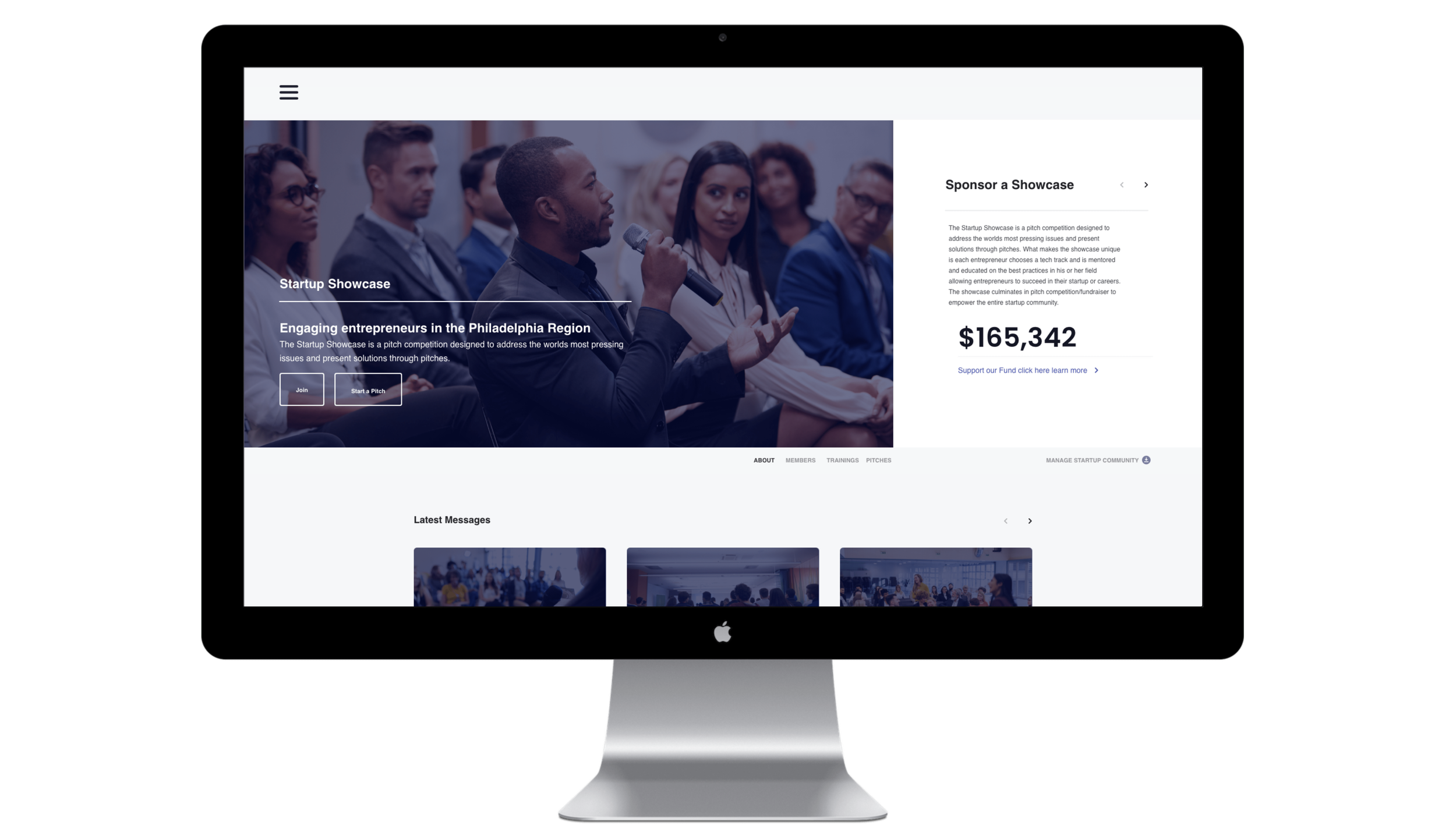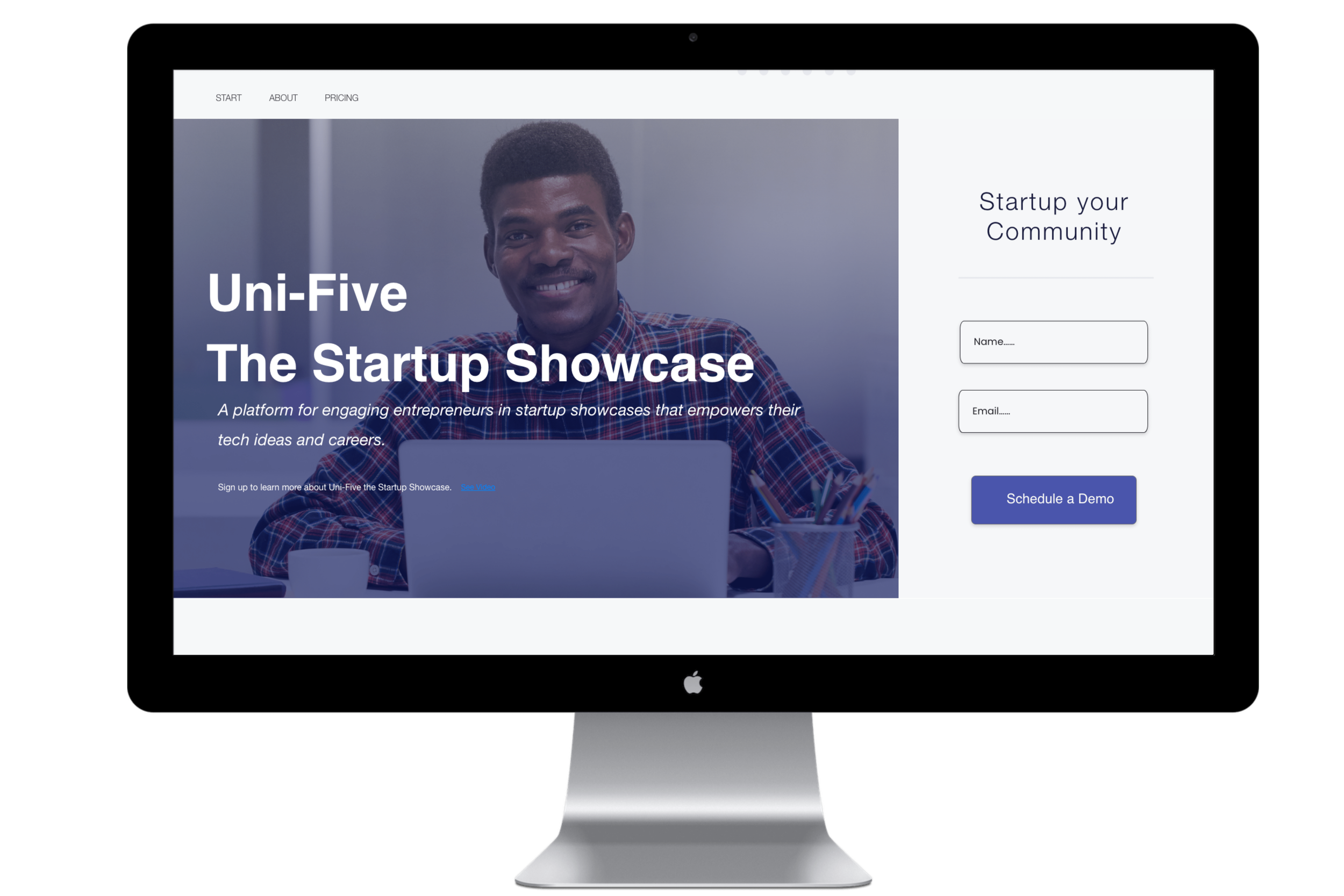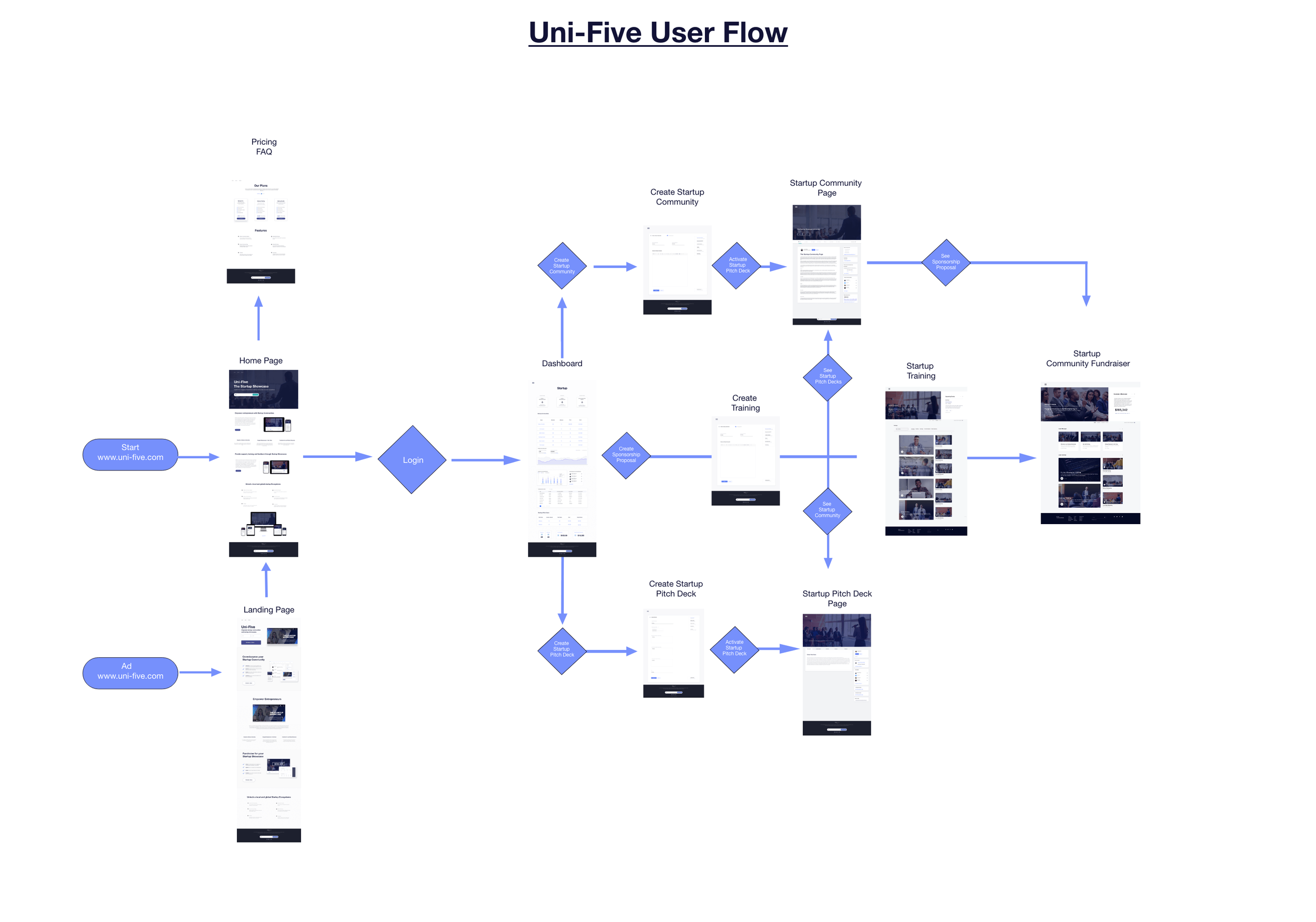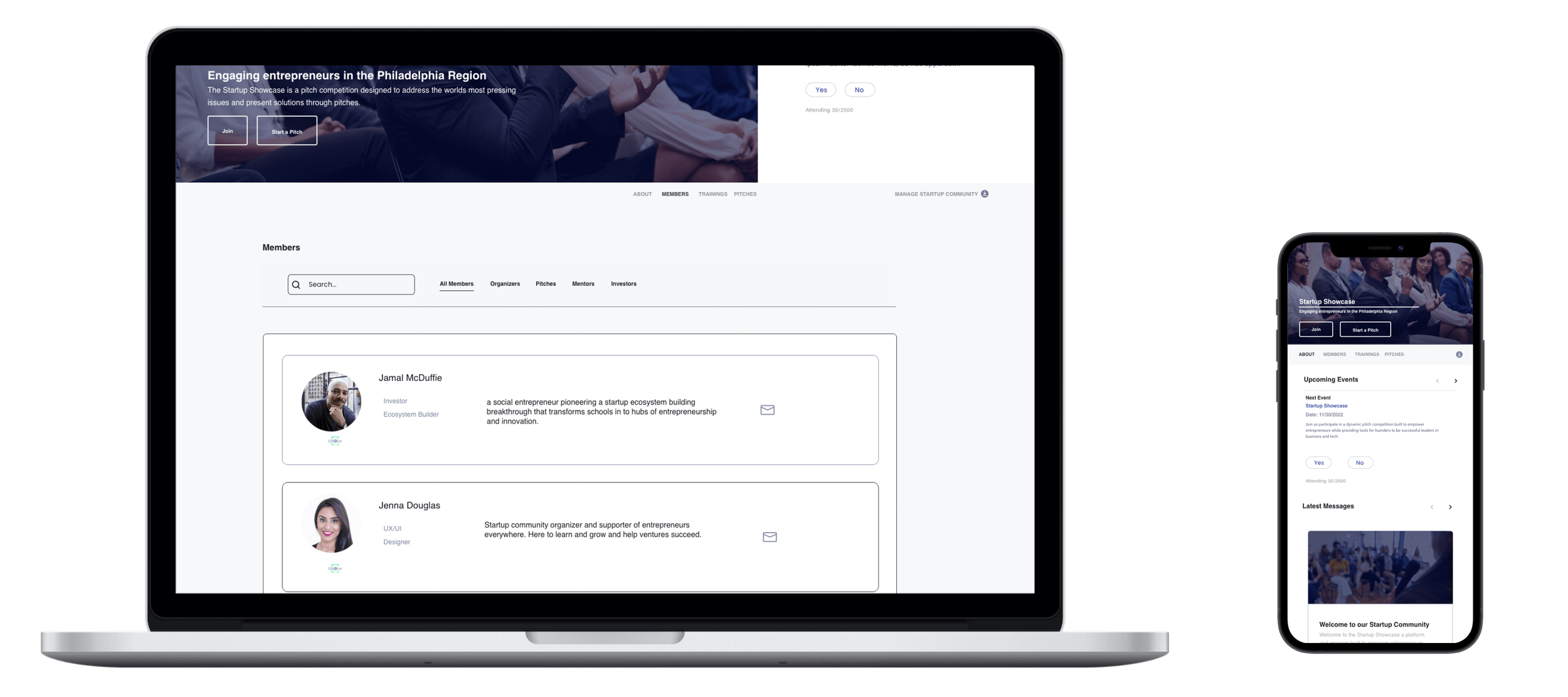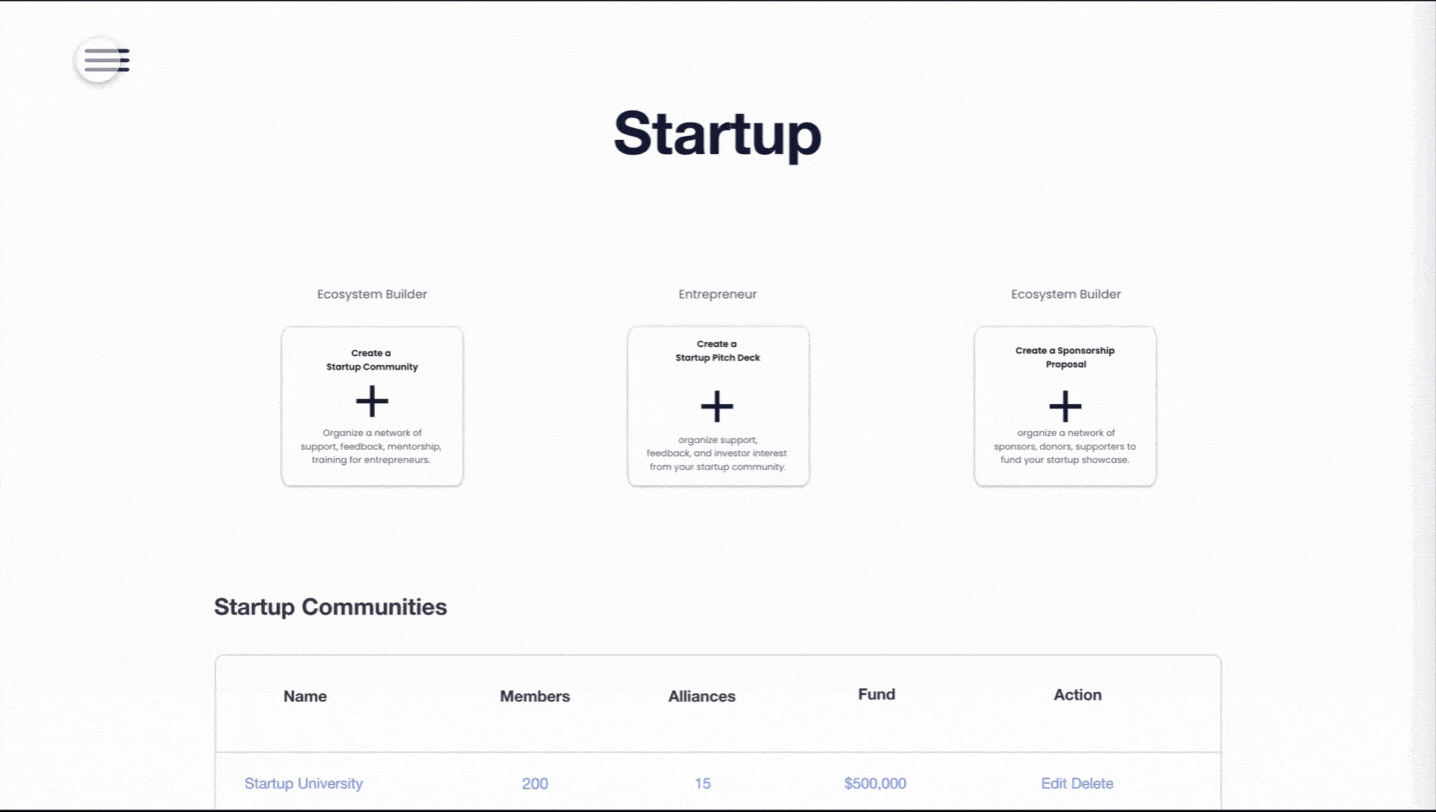Uni-Five
The Startup Showcase
Uni-Five The Startup Showcase
Research, Web Design, UX/UI, User Testing
Background
Uni-Five the Startup Showcase is an application for engaging entrepreneurs in startup communities and startup showcases. The platform set out to improve its user experience and redesign its user interface to become the go-to platform for startup community building and pitch competition management. On the platform ecosystem builders, organize startup communities and startup showcases (pitch competitions) that provide support, feedback, mentorship, training, and funds for entrepreneurs.
More importantly, what preceded this attempt for a redesigned platform was a significant problem noticed by entrepreneurs, Investors, and Entrepreneurial Directors alike. How can you connect the disconnected, or how do you create legitimate links to social and economic exchange? The research involved in solving this problem is of historical significance. If this innovation could create legitimate links to social and economic exchange along with unlocking the dormant capacity of people to solve their own problems through innovation, it would not only be a breakthrough in entrepreneurial ecosystem building but a blueprint for eliminating poverty and all of its social trappings (poor health outcomes). Due to this platform's gravity and potential, research was conducted with great care and passion.
User Story
Challenge
The challenge in this project was creating a landing page that communicated to our target market (entrepreneurial ecosystem builders) our unique value proposition. Since ecosystem building is a new science and many leaders in the entrepreneurial space are unaware of its best practices, our landing page should provide information about the benefits of crowdsourcing a startup community and emphasize the startup showcase as a critical engagement. Finally, a simple call to action should allow the user to learn more and ask questions.
Process
I began by conducting secondary research on entrepreneurial ecosystem building learning from the book "The Startup Community Way" by Brad Field and Ian Hathaway. I also referenced the "Entrepreneurial Ecosystem Building Playbook provided by the Kaufman Foundation. I followed up my secondary research with observational research. I joined several notable startup communities across the country; some ran by Investors, some ran by Directors of Entrepreneurship and Non-profit Business Leaders. While joining these communities, I set up several interviews with entrepreneurial ecosystem builders, primarily Directors of Entrepreneurship, to uncover pain points in entrepreneurial ecosystem building and uncover pain points in existing technology. Many ecosystem builders relied on technology to organize their communities. Some platforms used were of general use, a few new platforms were specifically built to organize entrepreneurial communities, and others were custom-made. What I noticed about all these platforms is that they followed a social networking model. They primarily shared information. These platforms successfully organize startup communities, but their primary use was relaying or sharing information within the group. There also was the ability to search and learn about others in the community. However, posting-centered platforms made it difficult for entrepreneurs to benefit from the startup community. To better understand, I interviewed five entrepreneurial ecosystem builders from an online startup community platform. The interview revealed that engagement on the existing startup community platform was low. Ecosystem builders had a challenging time engaging entrepreneurs, and entrepreneurs found it difficult to engage the community in a way that would advance their business ideas. Furthermore, the top-down format of these platforms made entrepreneurs passive recipients and not active users in the platform/ startup community.
After understanding this problem, I began exploring some foundational elements and themes that would enhance the existing Uni-Five platform. One glaring observation is that the platforms used in entrepreneurial ecosystem building failed to implement any of the best practices in entrepreneurial ecosystem building. According to the book "The Startup Community Way" the best startup ecosystems are:
Led by entrepreneurs
Have a diverse Community
Think long term
Have consistent engagement
So how do existing entrepreneurial ecosystem-building platforms fall short? The top-down information sharing, social networking type of platforms have no way for entrepreneurs to lead, and they are missing a signature engagement event. Which ultimately leads to a poor startup community and low online engagement.
Uni-Five, The Startup Showcase, set out to differentiate itself by having a built-in engagement strategy The Startup Showcase or pitch competition event. This key engagement can be leveraged for online or offline use, keeping the community active, which is a best practice in entrepreneurial ecosystem building. Another key feature added to the platform is the ability to nominate several startup community members to the role of Startup Community Organizers, which grants admin access. This feature would allow ecosystem builders to select several entrepreneurs to lead the startup community and free the ecosystem builder of the sole task of organizing the community. These two additions are consistent with the best practices in entrepreneurial ecosystem building and could be the key to flourishing entrepreneurial ecosystems online.
To leverage this feature, I began to think of ways to anchor users around the startup community's growth and progress and create a consistent active user. I began to focus on the dashboard, an interface that both users use to navigate the platform. I began to think of how the dashboard could consistently update all users about the startup community's growth and progress, helping to make startup community growth the main objective of both users. I created several wireframes that emphasized new members, number of investors, number of training, and funds raised.
Results
Secondary research provided some important insights in how entrepreneurial ecosystem building could be sucessful on and offline. These insights informed the creation of key features and themes giving the platform a unique value proposition.

